Campus/People
-
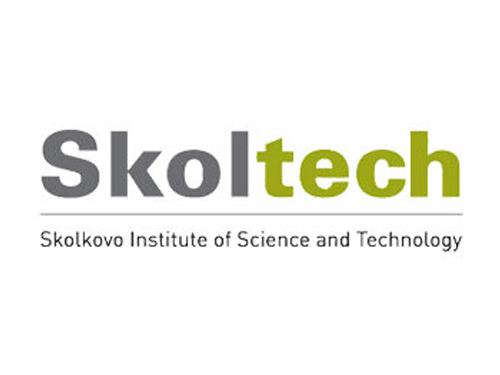 The MIT Skoltech Initiative Report identifies KAIST as one of the core group of emerging leaders for academic entrepreneurship and innovation
The Massachusetts Institute of Technology (MIT) Skoltech Initiative was established in 2011 to support MIT’s multi-year collaboration in building the Skolkovo Institute of Science and Technology (Skoltech), a private graduate research university in Skolkovo, Russia.
Recently, the office of the MIT Skoltech Initiative has published a benchmark report conducted from 2012 to 2014 by Dr. Ruth Graham, an internationally recognized leading consultant for engineering education and research as well as academic technology-driven entrepreneurship, under the guidance of MIT professors and the Center for Entrepreneurship and Innovation at the MIT Skoltech Initiative.
The report identified more than 200 institutions as the world’s most highly-regarded entrepreneurial universities and characterized the approach taken by them to build university-based ecosystems for entrepreneurship and innovation (E&I).
Among the top-ranked institutions, the report mentioned an emerging group of leaders (EGLs) that are “located within more challenging environments but establishing strong entrepreneurship and innovation profiles and reputations.” The report named, in particular, five universities, KAIST (Korea), Technion (Israel), Aalto University (Finland), the University of Michigan (US), and the University of Auckland (NZ), as the core group of the EGLs.
This benchmarking study was written to highlight key strategies and features associated with well-regarded university E&I transformations within more challenging environments and to address barriers and limits faced by the EGLs, thereby providing a good model to other universities wishing to make similar changes.
Through an in-depth case study of a small group of emerging universities, the report concluded that three major components play a critical role in the development of institutional E&I capacity and the growth of ecosystems for E&I:
Component 1: Inclusive grassroots community of E&I engagement across university populations and regional community;
Component 2: Strength in industry-funded research and licensing of university-owned technology; and
Component 3: University E&I agenda reflected in its policies, mission, budget allocations, incentives and curriculum
For more details, please visit the link below:
http://web.mit.edu/sktech/sktech-program/entrepreneurship-innovation/benchmark.html
2014.08.20 View 8202
The MIT Skoltech Initiative Report identifies KAIST as one of the core group of emerging leaders for academic entrepreneurship and innovation
The Massachusetts Institute of Technology (MIT) Skoltech Initiative was established in 2011 to support MIT’s multi-year collaboration in building the Skolkovo Institute of Science and Technology (Skoltech), a private graduate research university in Skolkovo, Russia.
Recently, the office of the MIT Skoltech Initiative has published a benchmark report conducted from 2012 to 2014 by Dr. Ruth Graham, an internationally recognized leading consultant for engineering education and research as well as academic technology-driven entrepreneurship, under the guidance of MIT professors and the Center for Entrepreneurship and Innovation at the MIT Skoltech Initiative.
The report identified more than 200 institutions as the world’s most highly-regarded entrepreneurial universities and characterized the approach taken by them to build university-based ecosystems for entrepreneurship and innovation (E&I).
Among the top-ranked institutions, the report mentioned an emerging group of leaders (EGLs) that are “located within more challenging environments but establishing strong entrepreneurship and innovation profiles and reputations.” The report named, in particular, five universities, KAIST (Korea), Technion (Israel), Aalto University (Finland), the University of Michigan (US), and the University of Auckland (NZ), as the core group of the EGLs.
This benchmarking study was written to highlight key strategies and features associated with well-regarded university E&I transformations within more challenging environments and to address barriers and limits faced by the EGLs, thereby providing a good model to other universities wishing to make similar changes.
Through an in-depth case study of a small group of emerging universities, the report concluded that three major components play a critical role in the development of institutional E&I capacity and the growth of ecosystems for E&I:
Component 1: Inclusive grassroots community of E&I engagement across university populations and regional community;
Component 2: Strength in industry-funded research and licensing of university-owned technology; and
Component 3: University E&I agenda reflected in its policies, mission, budget allocations, incentives and curriculum
For more details, please visit the link below:
http://web.mit.edu/sktech/sktech-program/entrepreneurship-innovation/benchmark.html
2014.08.20 View 8202 -
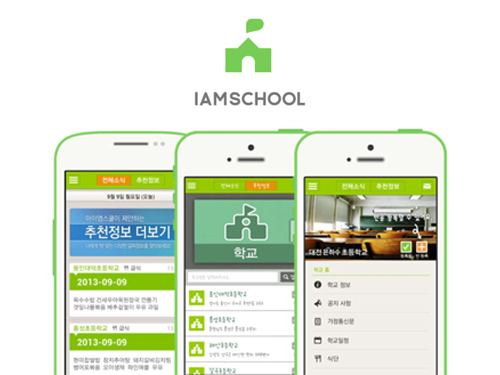 IAMCOMPANY, an educational technology startup created by a KAIST student, featured online in EdSurge
EdSurge is a U.S.-based online news site focused on education and technology innovation, which published an article, dated August 12, 2014, on IAMCOMPANY (http://iamcompany.net), a startup created by a KAIST student, Inmo (Ryan) Chung.
The article introduced one of the company’s most popular and free smartphone applications called “IAMSCHOOL” that “funnels school announcements and class notices to parents’ smartphones using a format similar to Twitter and Google+.”
For more about IAMCOMPANY, please visit the link below:
EdSurge, August 12, 2014
“South Korea’s Biggest Educational Information App Plans Pan-Asian Expansion”
https://www.edsurge.com/n/2014-08-12-south-korea-s-biggest-educational-information-app-plans-pan-asian-expansion
2014.08.19 View 7664
IAMCOMPANY, an educational technology startup created by a KAIST student, featured online in EdSurge
EdSurge is a U.S.-based online news site focused on education and technology innovation, which published an article, dated August 12, 2014, on IAMCOMPANY (http://iamcompany.net), a startup created by a KAIST student, Inmo (Ryan) Chung.
The article introduced one of the company’s most popular and free smartphone applications called “IAMSCHOOL” that “funnels school announcements and class notices to parents’ smartphones using a format similar to Twitter and Google+.”
For more about IAMCOMPANY, please visit the link below:
EdSurge, August 12, 2014
“South Korea’s Biggest Educational Information App Plans Pan-Asian Expansion”
https://www.edsurge.com/n/2014-08-12-south-korea-s-biggest-educational-information-app-plans-pan-asian-expansion
2014.08.19 View 7664 -
 EureCar, KAIST's Self-Driving Car, Made It to the Global Student Design Finalists at the 2014 National Instruments Annual Conference in Austin, Texas
The National Instruments Week 2014, an annual conference hosted by the National Instruments Corporation (NI), a global producer of automated test equipment and virtual instrumentation software, was held on August 4-7, 2014 at the Austin Convention Center in Texas. This international conference on graphical system design brought together more than 3,200 leading engineers and scientists across a spectrum of industries, from automotive to telecommunications, to robotics to energy.
On the third day of the keynote sessions at the conference, August 7, 2014, the winner of the Global Student Design Competition (GSDC) was announced.
EureCar, a self-driving car developed by Professor “David” Hyunchul Shim at the Department of Aerospace Engineering, KAIST, and his students, was one of the three finalists that were invited to the conference to contend for the Global Grand Prize.
The three finalists, each selected from a regional competition, were: EureCar from KAIST, Sepios, a nautical robot from Swiss Federal Institute of Technology in Zürich (ETH Zürich), and NASA Student Launch Project from the University of North Carolina at Charlotte. A total of 3,250 student research teams from 25 countries entered the 2014 GSDC, and the winner was ETH Zürich.
GSDC is designed to promote a better understanding and application by engineering students of NI’s system design software and hardware in their research and learning. Participating students utilized NI’s LabVIEW (software) and CompactRIO (hardware) to create their own solutions to engineering problems that encompass inexpensive medical devices to complex underwater autonomous vehicles.
For details about the finalists, please go to:
http://www.kaist.ac.kr/Upl/downfile/TS4159_Wahby_Student_Design_Showcase.pdf
2014.08.18 View 8536
EureCar, KAIST's Self-Driving Car, Made It to the Global Student Design Finalists at the 2014 National Instruments Annual Conference in Austin, Texas
The National Instruments Week 2014, an annual conference hosted by the National Instruments Corporation (NI), a global producer of automated test equipment and virtual instrumentation software, was held on August 4-7, 2014 at the Austin Convention Center in Texas. This international conference on graphical system design brought together more than 3,200 leading engineers and scientists across a spectrum of industries, from automotive to telecommunications, to robotics to energy.
On the third day of the keynote sessions at the conference, August 7, 2014, the winner of the Global Student Design Competition (GSDC) was announced.
EureCar, a self-driving car developed by Professor “David” Hyunchul Shim at the Department of Aerospace Engineering, KAIST, and his students, was one of the three finalists that were invited to the conference to contend for the Global Grand Prize.
The three finalists, each selected from a regional competition, were: EureCar from KAIST, Sepios, a nautical robot from Swiss Federal Institute of Technology in Zürich (ETH Zürich), and NASA Student Launch Project from the University of North Carolina at Charlotte. A total of 3,250 student research teams from 25 countries entered the 2014 GSDC, and the winner was ETH Zürich.
GSDC is designed to promote a better understanding and application by engineering students of NI’s system design software and hardware in their research and learning. Participating students utilized NI’s LabVIEW (software) and CompactRIO (hardware) to create their own solutions to engineering problems that encompass inexpensive medical devices to complex underwater autonomous vehicles.
For details about the finalists, please go to:
http://www.kaist.ac.kr/Upl/downfile/TS4159_Wahby_Student_Design_Showcase.pdf
2014.08.18 View 8536 -
 The Fifth YLKamp Held at KAIST
The student leadership organization of KAIST, known as Young Leaders in KAIST (YLK), held its fifth annual camp called the YLKamp inviting high school students in rural areas across Korea from July 11th to 14th.
The YLKamp is a study mentee-mentor camp, where KAIST students teach and deliver their knowledge on “how to study” to high school students from the countryside. The camp helps young students who have passion and talent, but lack the opportunity to experience and learn more.
KAIST encourages students to participate in activities where they can donate their talent and learn leadership skills. About 20 KAIST students planned all the activities, from creating camp programs, selecting participants to requesting sponsorship from outside organizations including the KAIST Alumni.
This year, more than 150 high school students in rural areas applied for the camp, and of them, 60 students were chosen.
The camp activities included lectures, individual mentoring, group projects, career exploration meetings, and invited speaker presentations.
Since its foundation in 2010, the YLKamp has been held every year at KAIST.
2014.08.14 View 5959
The Fifth YLKamp Held at KAIST
The student leadership organization of KAIST, known as Young Leaders in KAIST (YLK), held its fifth annual camp called the YLKamp inviting high school students in rural areas across Korea from July 11th to 14th.
The YLKamp is a study mentee-mentor camp, where KAIST students teach and deliver their knowledge on “how to study” to high school students from the countryside. The camp helps young students who have passion and talent, but lack the opportunity to experience and learn more.
KAIST encourages students to participate in activities where they can donate their talent and learn leadership skills. About 20 KAIST students planned all the activities, from creating camp programs, selecting participants to requesting sponsorship from outside organizations including the KAIST Alumni.
This year, more than 150 high school students in rural areas applied for the camp, and of them, 60 students were chosen.
The camp activities included lectures, individual mentoring, group projects, career exploration meetings, and invited speaker presentations.
Since its foundation in 2010, the YLKamp has been held every year at KAIST.
2014.08.14 View 5959 -
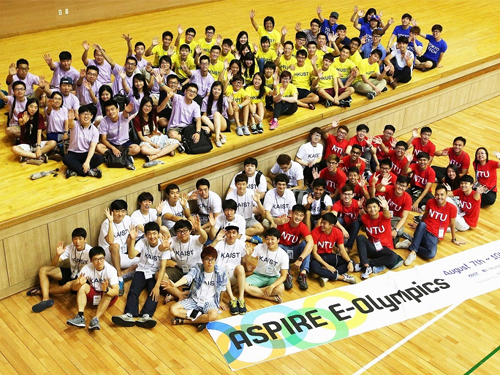 ASPIRE League 2014: E-Olympics among Five Asian Universities
About 150 undergraduate students from five leading science and technology (S&T) universities in Asia met at the KAIST campus to attend the E-Olympics on August 7-9, 2014.
The E-Olympics began as a student exchange conference held under the Asian Science and Technology Pioneering Institutes of Research and Education (ASPIRE) League, which offers a variety of events, such as workshops, sports matches, lab visits, special lectures, and art performances, to promote academic and research collaborations and cultural sharing between the students of the league member universities.
Founded in 2009, the ASPIRE League is a university consortium consisted of five top S&T universities in Asia: KAIST in Korea, the Hong Kong University of Science and Technology (HKUST) and Tsinghua University in China, Nanyang Technological University (NTU) in Singapore, and Tokyo Institute of Technology (Tokyo Tech) in Japan. The ASPIRE League aims to provide a knowledge and technology hub for innovation in Asia through the advancement of science and technology and the development of human resources.
Since its start, the ASPIRE League has been holding an annual conference with programs for research collaboration, student exchange, educational cooperation, and satellite laboratories among professors, senior managers, and students of the member universities. This year, however, the consortium decided to dedicate the conference to students by holding the E-Olympics.
Each university sent 30 students to KAIST for the participation of the E-Olympics. For three days, participating students engaged in discussions and presentations at academic workshops; held athletic games including a relay race, basketball, and a rowing race; and toured a few KAIST laboratories, among them: the E-mobility Research Center, the Bio-imaging and Cell Signaling Research Center, the Mechatronics Systems and Control Center, and the Center of Field Robotics for Innovation, Exploration and Defense.
The students also attended a music concert performed by a KAIST student club and a lecture entitled “Entrepreneurship through Global Networking” that emphasized the importance of personnel networking in transferring technological innovation into business opportunities.
Chang-Dong Yoo, the Dean of the International Office at KAIST, said, “The E-Olympics will offer students from top science and technology universities in Asia opportunities to interact with each other on a more personal level. I hope that through many of the E-Olympics programs, the students will learn about each other’s culture and academic strength and develop a sense of community to create a “New Asia” by working together.”
2014.08.11 View 11607
ASPIRE League 2014: E-Olympics among Five Asian Universities
About 150 undergraduate students from five leading science and technology (S&T) universities in Asia met at the KAIST campus to attend the E-Olympics on August 7-9, 2014.
The E-Olympics began as a student exchange conference held under the Asian Science and Technology Pioneering Institutes of Research and Education (ASPIRE) League, which offers a variety of events, such as workshops, sports matches, lab visits, special lectures, and art performances, to promote academic and research collaborations and cultural sharing between the students of the league member universities.
Founded in 2009, the ASPIRE League is a university consortium consisted of five top S&T universities in Asia: KAIST in Korea, the Hong Kong University of Science and Technology (HKUST) and Tsinghua University in China, Nanyang Technological University (NTU) in Singapore, and Tokyo Institute of Technology (Tokyo Tech) in Japan. The ASPIRE League aims to provide a knowledge and technology hub for innovation in Asia through the advancement of science and technology and the development of human resources.
Since its start, the ASPIRE League has been holding an annual conference with programs for research collaboration, student exchange, educational cooperation, and satellite laboratories among professors, senior managers, and students of the member universities. This year, however, the consortium decided to dedicate the conference to students by holding the E-Olympics.
Each university sent 30 students to KAIST for the participation of the E-Olympics. For three days, participating students engaged in discussions and presentations at academic workshops; held athletic games including a relay race, basketball, and a rowing race; and toured a few KAIST laboratories, among them: the E-mobility Research Center, the Bio-imaging and Cell Signaling Research Center, the Mechatronics Systems and Control Center, and the Center of Field Robotics for Innovation, Exploration and Defense.
The students also attended a music concert performed by a KAIST student club and a lecture entitled “Entrepreneurship through Global Networking” that emphasized the importance of personnel networking in transferring technological innovation into business opportunities.
Chang-Dong Yoo, the Dean of the International Office at KAIST, said, “The E-Olympics will offer students from top science and technology universities in Asia opportunities to interact with each other on a more personal level. I hope that through many of the E-Olympics programs, the students will learn about each other’s culture and academic strength and develop a sense of community to create a “New Asia” by working together.”
2014.08.11 View 11607 -
 2014 NEREC Conference on Nuclear Nonproliferation: July 31-August 1, 2014, Seoul
The Nonproliferation Education and Research Center (NEREC) at KAIST hosted an international conference on nuclear nonproliferation on July 31-August 1, 2014 in Seoul. The Ministry of Science, ICT and Future Planning, the Korean Nuclear Safety and Security Commission, and the Korea Nuclear Policy Society (KNPS) sponsored the event.
Over one hundred experts and "thought leaders" in nuclear security and nonproliferation attended the conference and discussed issues related to the nonproliferation of nuclear weapons, the role of scientific community in mitigating nuclear threat and promoting the peaceful use of nuclear power, and nuclear disarmament policy.
Keynote speakers were: Steven E. Miller, Director of International Security Program at Belfer Center for Science and International Affairs, Harvard University; Scott D. Sagan, Senior Fellow of the Center for International Security and Cooperation, Freeman Spogli Institute for International Studies, Stanford University; Mark Fitzpatrick, Director of the Nonproliferation and Disarmament Programme, International Institute for Strategic Studies; Sang-Hyun Lee, Director of Security Strategy, Sejong Institute; and Man-Sung Yim, Professor of Nuclear and Quantum Engineering, KAIST.
At the conference, Professor Yim, Director of KAIST NEREC said, “Korea has grown to become a key player in the development of commercial nuclear energy over the past decades. We hope that our conference encourages Korea to be more involved in the efforts of the international community to enhance the global nonproliferation regime.”
2014.08.05 View 12289
2014 NEREC Conference on Nuclear Nonproliferation: July 31-August 1, 2014, Seoul
The Nonproliferation Education and Research Center (NEREC) at KAIST hosted an international conference on nuclear nonproliferation on July 31-August 1, 2014 in Seoul. The Ministry of Science, ICT and Future Planning, the Korean Nuclear Safety and Security Commission, and the Korea Nuclear Policy Society (KNPS) sponsored the event.
Over one hundred experts and "thought leaders" in nuclear security and nonproliferation attended the conference and discussed issues related to the nonproliferation of nuclear weapons, the role of scientific community in mitigating nuclear threat and promoting the peaceful use of nuclear power, and nuclear disarmament policy.
Keynote speakers were: Steven E. Miller, Director of International Security Program at Belfer Center for Science and International Affairs, Harvard University; Scott D. Sagan, Senior Fellow of the Center for International Security and Cooperation, Freeman Spogli Institute for International Studies, Stanford University; Mark Fitzpatrick, Director of the Nonproliferation and Disarmament Programme, International Institute for Strategic Studies; Sang-Hyun Lee, Director of Security Strategy, Sejong Institute; and Man-Sung Yim, Professor of Nuclear and Quantum Engineering, KAIST.
At the conference, Professor Yim, Director of KAIST NEREC said, “Korea has grown to become a key player in the development of commercial nuclear energy over the past decades. We hope that our conference encourages Korea to be more involved in the efforts of the international community to enhance the global nonproliferation regime.”
2014.08.05 View 12289 -
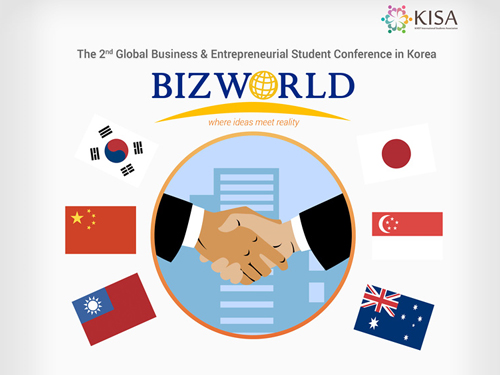 BizWorld 2014 Takes Place at the KAIST campus: July 28-August 2, 2014
A multinational student conference on science, technology, and business called “BizWorld 2014 (http://kisa.kaist.ac.kr/bizworld/kaist/)” began on July 28, 2014 and continues through August 2, 2014 at the KAIST campus in Daejeon.
Created in 2013 by international students at KAIST, the conference aims to promote entrepreneurship among students within KAIST as well as those from other nations and to exchange knowledge and experiences in translating technological and scientific innovations into business opportunities.
The KAIST International Student Association (KISA) hosts the conference in partnership with five universities in the Asia-Pacific region: Peking University in China, National Taiwan University in Taiwan, the University of Tokyo in Japan, National University of Singapore, and the University of Queensland in Australia.
This year, four distinguished speakers from the Korean government and private sector will give talks on job creation through science and technology advancement, strategic management of technology, and trends in information technology business.
Participating students will also visit laboratories for electric vehicles being developed by KAIST: Armadilo T and the Online Electric Vehicle (OLEV).
The Armadillo T is a small, light, and agile electric car that folds its body for an efficient use of space. OLEV can be an electric car, bus, or even a high-capacity train, which is recharged wirelessly while on-the-go.
The s tudents will have a Q&A meeting with researchers and discuss a possible business model to commercialize these technologies.
2014.07.30 View 8834
BizWorld 2014 Takes Place at the KAIST campus: July 28-August 2, 2014
A multinational student conference on science, technology, and business called “BizWorld 2014 (http://kisa.kaist.ac.kr/bizworld/kaist/)” began on July 28, 2014 and continues through August 2, 2014 at the KAIST campus in Daejeon.
Created in 2013 by international students at KAIST, the conference aims to promote entrepreneurship among students within KAIST as well as those from other nations and to exchange knowledge and experiences in translating technological and scientific innovations into business opportunities.
The KAIST International Student Association (KISA) hosts the conference in partnership with five universities in the Asia-Pacific region: Peking University in China, National Taiwan University in Taiwan, the University of Tokyo in Japan, National University of Singapore, and the University of Queensland in Australia.
This year, four distinguished speakers from the Korean government and private sector will give talks on job creation through science and technology advancement, strategic management of technology, and trends in information technology business.
Participating students will also visit laboratories for electric vehicles being developed by KAIST: Armadilo T and the Online Electric Vehicle (OLEV).
The Armadillo T is a small, light, and agile electric car that folds its body for an efficient use of space. OLEV can be an electric car, bus, or even a high-capacity train, which is recharged wirelessly while on-the-go.
The s tudents will have a Q&A meeting with researchers and discuss a possible business model to commercialize these technologies.
2014.07.30 View 8834 -
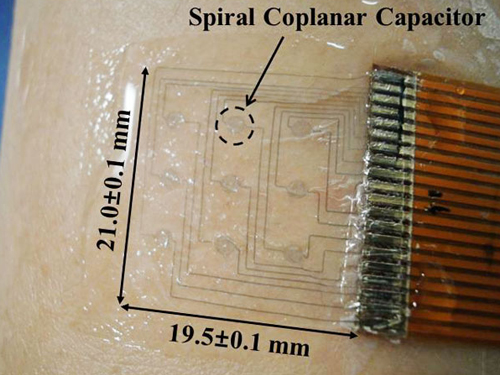 Newsweek: The Goosebump Sensor That Knows How You Feel
Newsweek covered the introduction of the goosebump sensor invented by Professor Young-Ho Cho of the Department of Bio and Brain Engineering at KAIST in an article dated July 27, 2014.
The article entitled “The Goosebump Sensor That Knows How You Feel” explains how the sensor works and reports on the current research and development trends in emotion-sensing technology.
Professor Cho’s research paper was originally published in the journal Applied Physics Letters on June 24, 2014, titled “A Flexible Skin Piloerection Monitoring Sensor."
Newsweek, July 27, 2014
“The Goosebump Sensor That Knows How You Feel”
http://www.newsweek.com/goosebump-sensor-knows-how-you-feel-260689
2014.07.28 View 7607
Newsweek: The Goosebump Sensor That Knows How You Feel
Newsweek covered the introduction of the goosebump sensor invented by Professor Young-Ho Cho of the Department of Bio and Brain Engineering at KAIST in an article dated July 27, 2014.
The article entitled “The Goosebump Sensor That Knows How You Feel” explains how the sensor works and reports on the current research and development trends in emotion-sensing technology.
Professor Cho’s research paper was originally published in the journal Applied Physics Letters on June 24, 2014, titled “A Flexible Skin Piloerection Monitoring Sensor."
Newsweek, July 27, 2014
“The Goosebump Sensor That Knows How You Feel”
http://www.newsweek.com/goosebump-sensor-knows-how-you-feel-260689
2014.07.28 View 7607 -
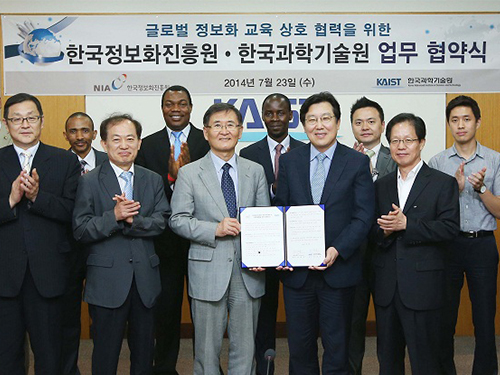 Cooperation Agreement with Korea's National Information Society Agency on Global Information Education
KAIST and the National Information Society Agency (NIA) signed a memorandum of understanding (MOU) to launch global information education cooperation. President Steve Kang and President Kwang-Soo Chang of NIA, attended the signing ceremony held at KAIST on July 23, 2014.
Under the MOU, KAIST and NIA will jointly develop contents for global information education; plan and operate educational programs; provide consulting services to train experts in information; and implement exchange programs for faculty and students.
In addition, the two organizations plan to cooperate in the establishment of a network, consisting of alumni and students from the Global Information and Telecommunications Technology Program at KAIST (KAIST ITTP), to deliver a Korean model of electronic government (e-government) to other nations worldwide.
President Kang said, “Korea is one of the most wired nations in the world. By working with the NIA, we hope to have an opportunity to export our knowledge and experiences in the construction of e-governments to less technologically advanced nations by becoming a good precedent for them.”
Since 2006, KAIST has invited 20-30 government officials from underdeveloped or developing countries each year, offering them enrollment in graduate programs at KAIST ITTP.
2014.07.25 View 7149
Cooperation Agreement with Korea's National Information Society Agency on Global Information Education
KAIST and the National Information Society Agency (NIA) signed a memorandum of understanding (MOU) to launch global information education cooperation. President Steve Kang and President Kwang-Soo Chang of NIA, attended the signing ceremony held at KAIST on July 23, 2014.
Under the MOU, KAIST and NIA will jointly develop contents for global information education; plan and operate educational programs; provide consulting services to train experts in information; and implement exchange programs for faculty and students.
In addition, the two organizations plan to cooperate in the establishment of a network, consisting of alumni and students from the Global Information and Telecommunications Technology Program at KAIST (KAIST ITTP), to deliver a Korean model of electronic government (e-government) to other nations worldwide.
President Kang said, “Korea is one of the most wired nations in the world. By working with the NIA, we hope to have an opportunity to export our knowledge and experiences in the construction of e-governments to less technologically advanced nations by becoming a good precedent for them.”
Since 2006, KAIST has invited 20-30 government officials from underdeveloped or developing countries each year, offering them enrollment in graduate programs at KAIST ITTP.
2014.07.25 View 7149 -
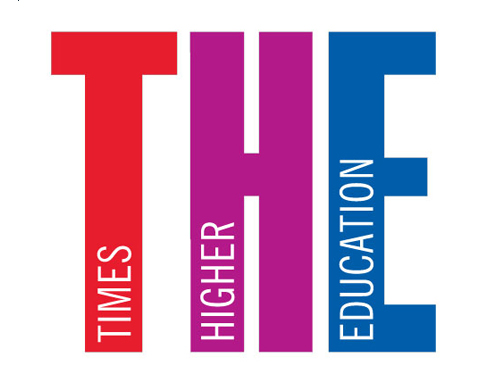 Times Higher Education magazine features KAIST, July 2014
The Times Higher Education (THE) has featured KAIST in an article entitled “Young Universities’ Secrets of Success” dated on July 17, 2014.
The magazine chose five universities from the Times Higher Education's 100 Under 50 2014 rankings: KAIST, Koç University in Turkey, Maastricht University in Netherlands, Nanyang Technological University in Singapore, and Hong Kong Polytechnic University, China. These universities are less than 50 years old.
The article highlighted some of their current efforts to deliver quality administrative service for students and professors as well as innovative education and research programs to set them apart from long-established elite universities such as Harvard and Cambridge.
For the full text, please visit the link below:
Times Higher Education, July 17, 2014
“Young Universities’ Secret of Success”
http://www.kaist.ac.kr/Upl/downfile/THE's_Article_Jul_17_2014.pdf
2014.07.23 View 6642
Times Higher Education magazine features KAIST, July 2014
The Times Higher Education (THE) has featured KAIST in an article entitled “Young Universities’ Secrets of Success” dated on July 17, 2014.
The magazine chose five universities from the Times Higher Education's 100 Under 50 2014 rankings: KAIST, Koç University in Turkey, Maastricht University in Netherlands, Nanyang Technological University in Singapore, and Hong Kong Polytechnic University, China. These universities are less than 50 years old.
The article highlighted some of their current efforts to deliver quality administrative service for students and professors as well as innovative education and research programs to set them apart from long-established elite universities such as Harvard and Cambridge.
For the full text, please visit the link below:
Times Higher Education, July 17, 2014
“Young Universities’ Secret of Success”
http://www.kaist.ac.kr/Upl/downfile/THE's_Article_Jul_17_2014.pdf
2014.07.23 View 6642 -
 Smart eBook appeared in New York Times on May 17, 2014
Smart eBook (hhttp://www.youtube.com/watch?v=rVyBwz1-AiE), an interface that allows e-book readers to have the similar experience and convenience to reading paper books, was introduced in an article from the New York Times on May 17, 2014. The Smart eBook was developed by researchers from the Institute for Information Technology Convergence at KAIST.
For the article, please go to the link below:
New York Times, May 17, 2014
“Tackling the Limits of Touch Screens”
http://www.nytimes.com/2014/05/18/business/tackling-the-limits-of-touch-screens.html?_r=0
2014.07.21 View 6270
Smart eBook appeared in New York Times on May 17, 2014
Smart eBook (hhttp://www.youtube.com/watch?v=rVyBwz1-AiE), an interface that allows e-book readers to have the similar experience and convenience to reading paper books, was introduced in an article from the New York Times on May 17, 2014. The Smart eBook was developed by researchers from the Institute for Information Technology Convergence at KAIST.
For the article, please go to the link below:
New York Times, May 17, 2014
“Tackling the Limits of Touch Screens”
http://www.nytimes.com/2014/05/18/business/tackling-the-limits-of-touch-screens.html?_r=0
2014.07.21 View 6270 -
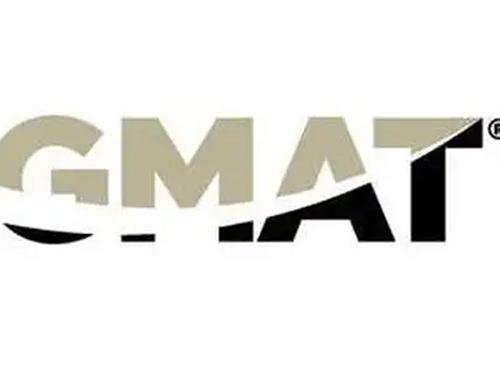 Interview with KAIST MBA: 5 Reasons to Study in Korea for Your MBA
The Graduate Management Admission Council (GMAC) published online an interview with Mija Yoon, the director of the Admission & Placement Center at KAIST College of Business (KAIST MBA) in Seoul, Korea, on July 18, 2014.
In the interview, Director Yoon listed the benefits of studying MBA programs at Korean universities, as well as working in Korea.
For the article, please visit the link below:
GMAT, July 18, 2014
“5 Reasons to Study in Korea for Your MBA”
http://www.beatthegmat.com/mba/2014/07/18/5-reasons-to-study-in-korea-for-your-mba
2014.07.21 View 8653
Interview with KAIST MBA: 5 Reasons to Study in Korea for Your MBA
The Graduate Management Admission Council (GMAC) published online an interview with Mija Yoon, the director of the Admission & Placement Center at KAIST College of Business (KAIST MBA) in Seoul, Korea, on July 18, 2014.
In the interview, Director Yoon listed the benefits of studying MBA programs at Korean universities, as well as working in Korea.
For the article, please visit the link below:
GMAT, July 18, 2014
“5 Reasons to Study in Korea for Your MBA”
http://www.beatthegmat.com/mba/2014/07/18/5-reasons-to-study-in-korea-for-your-mba
2014.07.21 View 8653